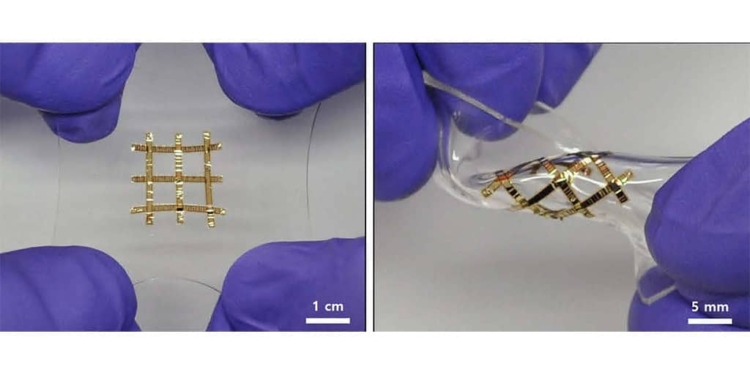Stretchable electronics is emerging as a promising new technology for next-generation wearable devices, according to a review published in Science and Technology of Advanced Materials.
The technology has many possible applications for healthcare, energy and the military. But there are several challenges involved in finding suitable materials and manufacturing methods. The biggest challenge for making stretchable electronics is that each component must endure being compressed, twisted and applied to uneven surfaces while maintaining its performance, according to the review author Wei Wu, materials scientist at Wuhan University, China.
Many different stretchable electronic components are being developed. For instance, low-cost stretchable conductors and electrodes are being made from silver nanowires and graphene. An urgent technical problem is the need for stretchable energy conversion and storage devices, such as batteries. Zinc-based batteries are promising candidates; however, more work is required to make them commercially viable.
An alternative to batteries is stretchable nanogenerators, which can produce electricity from various freely available vibrations, such as wind or human body movements. Stretchable solar cells could also be used to power wearable electronic devices.
By integrating multiple stretchable components, such as temperature, pressure and electrochemical sensors, supercapacitors etc it is possible to create a material resembling human skin that could use signals from sweat, tears or saliva for real-time, non-invasive healthcare monitoring, as well as for smart prosthetics or robots with enhanced sense capabilities. However, at present, fabrication of artificial skin remains time-consuming and complex.
Currently there are two main strategies for manufacturing stretchable electronics. The first is to use intrinsically stretchable materials, such as rubber, which can endure large deformations. However, these materials have limitations, such as high electrical resistance.
The second method is to make non-flexible materials stretchable using innovative design. For example, brittle semiconductor materials like silicon can be grown on a pre-stretched surface and then allowed to compress, creating buckling waves. Another method involves linking ‘islands’ of rigid conductive materials together using flexible interconnections, such as soft or liquid metals. Origami-inspired folding techniques can be used to make foldable electronic devices. In the future, stretchable electronics may be enhanced with new capabilities, such as wireless communication, self-charging or even self-healing.
The next step after laboratory tests is to bring stretchable electronic devices to market. This requires cheaper materials and faster, scalable manufacturing methods, concludes the review author.
featured image: This solar cell can be stretched (left) or twisted (right) without performance degradation. Copyright : Nam, J. et al. Scientific Reports. 8 Aug. 2017/Creative Commons


































